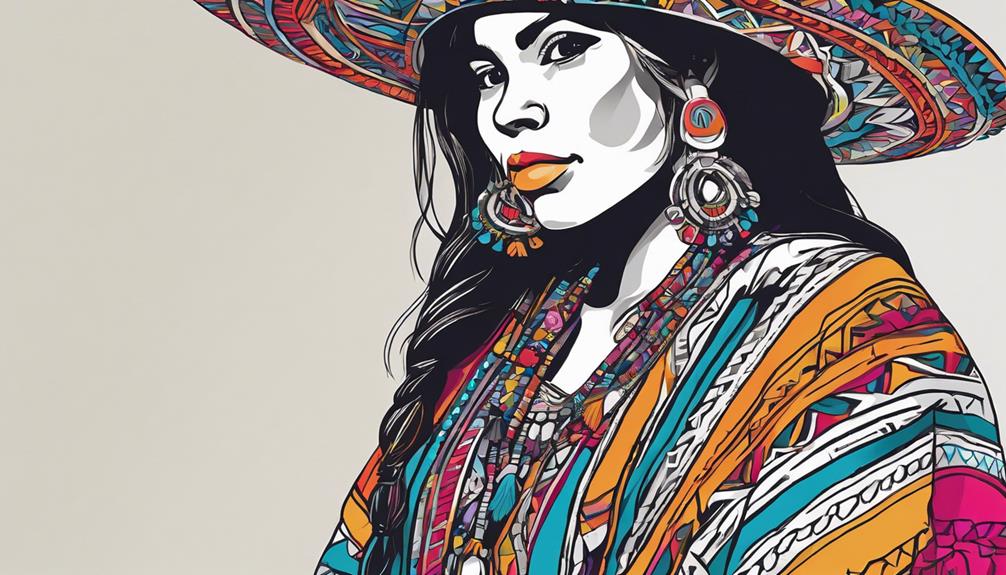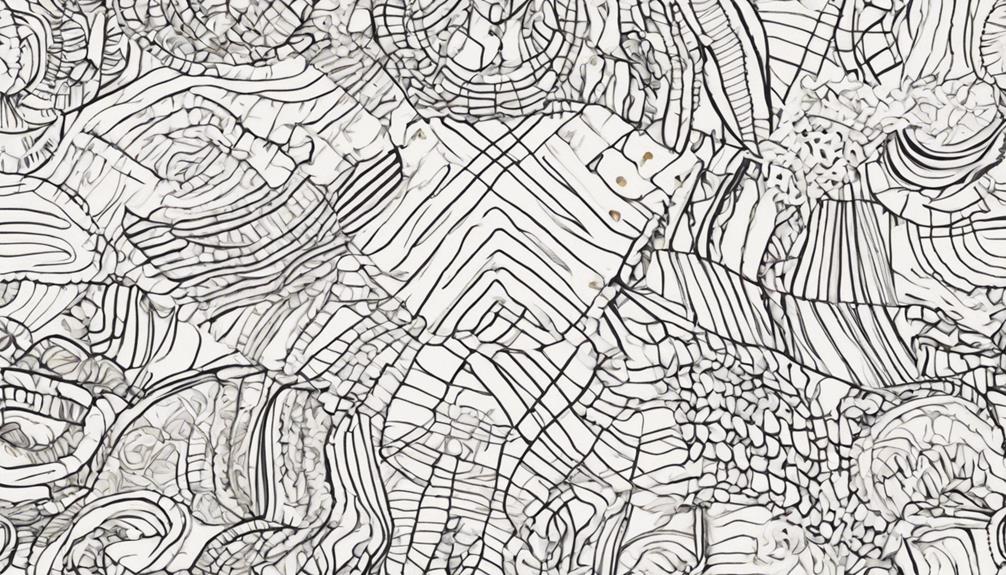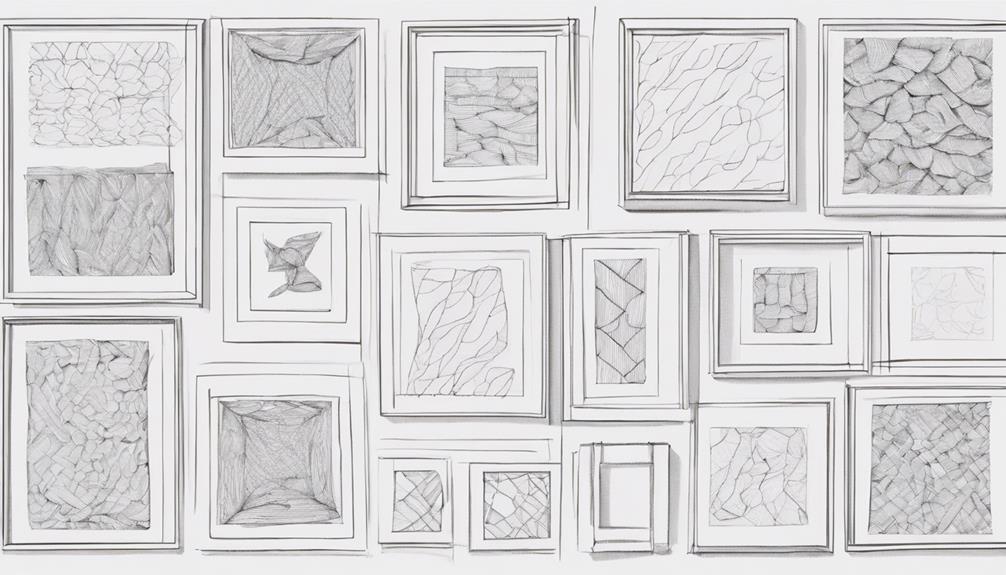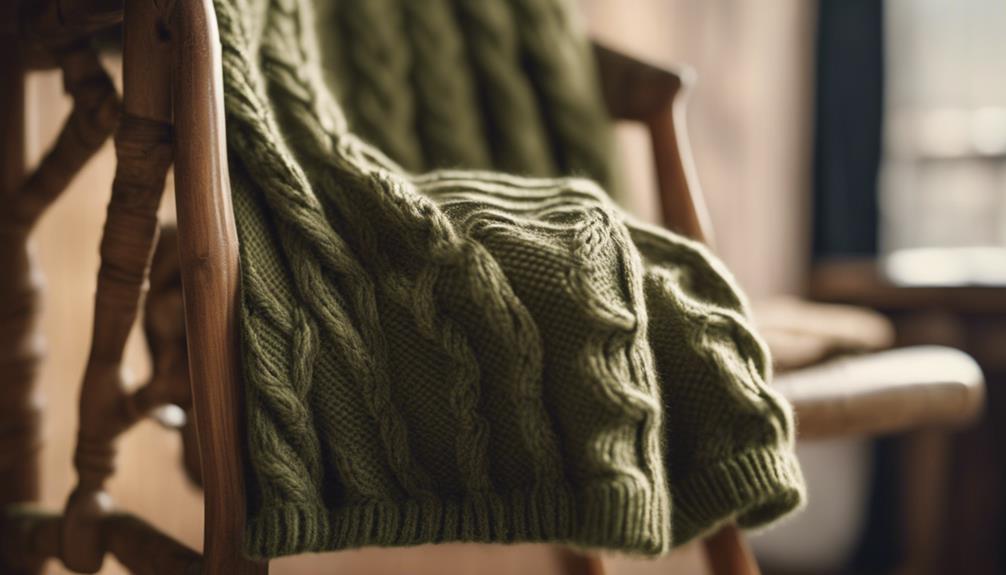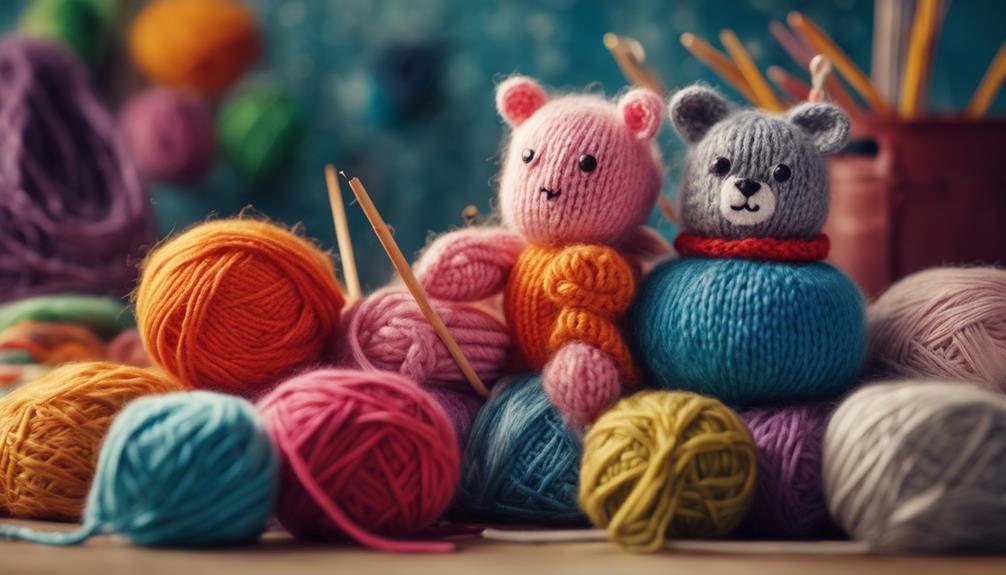Andean artisans in Peru continue to preserve their cultural heritage through the creation of intricate textiles made from llama, alpaca, and vicuña wool. These talented craftsmen skillfully incorporate patterns that reflect the unique geography and rich history of the Andean region. Peruvian textile art, with a legacy of more than 4,000 years, holds significant cultural value. Diverse indigenous communities such as the Paracas and Wari cultures have each added their own unique weaving methods to this enduring practice. Discover the vibrant colors, detailed designs, and ancient stories that are intricately woven into the fabric of traditional Peruvian textiles.
Key Takeaways
- Utilization of camelid wool and plant fibers in weaving.
- Incorporation of stem-stitch embroidery for beauty.
- Backstrap looms made from wood and bone.
- Natural dyeing process of yarn for vibrant colors.
- Ancient weaving techniques dating back over 4,000 years.
Ancient Peruvian Textile Techniques
Ancient Peruvian textile techniques involved intricate weaving methods using camelid wool and plant fibers. The traditional Peruvian weavers utilized these materials to create stunning textiles that were rich in cultural significance.
For example, the Paracas culture used their weavings in mummification rituals, incorporating stem-stitch embroidery to enhance the beauty of their pieces. These textiles not only served practical purposes but also held deep symbolic meanings within the society.
In the Nazca culture, textiles were adorned with intricate designs depicting abstract figures and animals. These designs showcased the artistic prowess of the weavers and reflected the spiritual beliefs of the Nazca people.
Similarly, the Wari culture produced tightly woven textiles featuring stylized bird motifs, which were associated with high status and prestige. The intricate weaving techniques employed by the Wari weavers demonstrated their skill and craftsmanship in creating these elaborate designs.
The traditional Peruvian textile art form wasn't only a means of creating functional items but also a way of expressing cultural identity and heritage through intricate weaving methods and designs.
Traditional Andean Weaving Practices
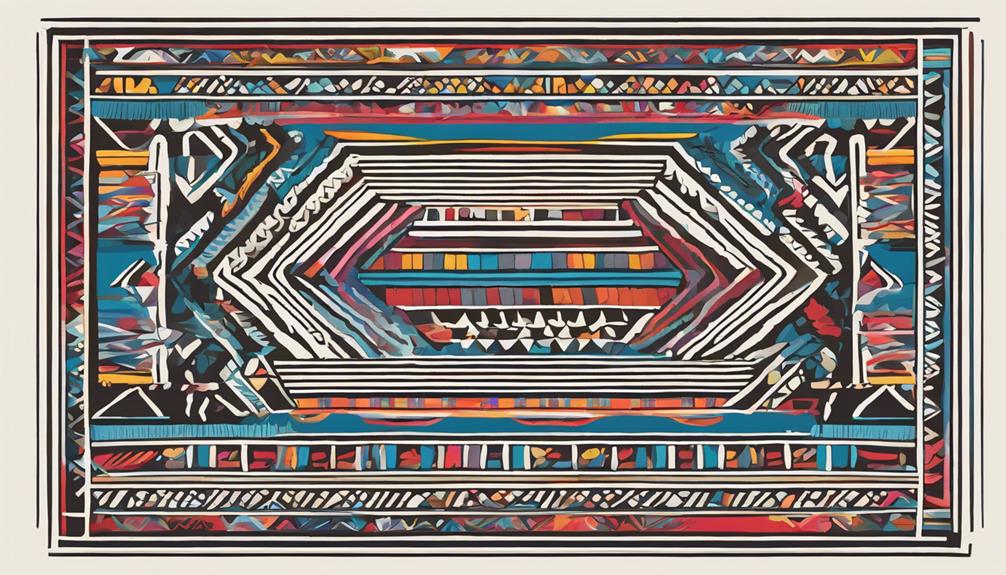
Andean weaving practices, with a rich history spanning over 4,000 years in Peru, continue to be cherished for their cultural significance today.
Traditional backstrap looms, crafted from wood and bone, are still utilized by skilled weavers in regions like Cusco and Chinchero.
The use of natural fibers such as llama, alpaca, and vicuña wool adds to the durability and authenticity of the intricate patterns woven into textiles, reflecting the geography and history of the Andean region.
Ancient Weaving Techniques
Traditional Andean weaving practices involve the utilization of backstrap looms, constructed from wood and bone, to create intricate textile art forms. These weaving techniques have been passed down through generations, dating back to pre-Inca times.
Skilled artisans weave elaborate patterns into textiles using these traditional methods, showcasing the rich cultural heritage of the Peruvian highlands. Natural fibers like alpaca wool are favored for their durability and thermal qualities in weaving, adding to the quality of the final products.
The backstrap loom, a simple yet effective tool, allows weavers to control the tension of the threads with precision, enabling them to craft detailed and complex designs. The use of ancient weaving techniques not only produces stunning textiles but also serves as a link to the past, preserving an essential aspect of Andean culture for future generations to appreciate and cherish.
Cultural Significance Today
Embracing the vibrant legacy of Peruvian textile art, contemporary weavers continue to honor and uphold the rich cultural heritage through traditional weaving practices. Peruvian textiles hold significant cultural importance today, with indigenous communities preserving ancient techniques and passing them down through generations.
The intricate patterns and vibrant colors seen in Peruvian textiles reflect a deep connection to the country's history and traditions. In modern times, Peruvian textiles aren't only valued for their aesthetic beauty but also for the stories and symbolism they carry.
Indigenous shepherds and breeders play a vital role in providing materials like alpaca and llama wool, which are essential for creating these textiles. Peruvian people take pride in wearing these bright textiles as part of their daily clothing, showcasing a blend of historical and modern design elements.
Peruvian Textile Artisan Techniques
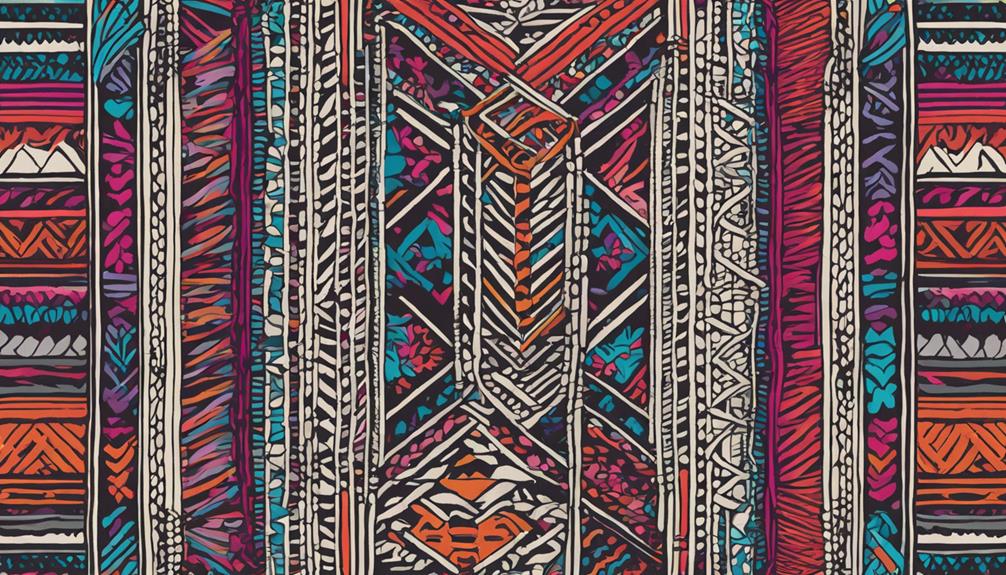
Peruvian textile artisans skillfully weave intricate designs using backstrap looms made of wood and bone. These artisans showcase traditional Peruvian textile techniques that have been honed over generations.
In places like Chinchero, women demonstrate the natural dyeing process of yarn, highlighting the importance of preserving these age-old methods. The textiles created through these techniques often feature elaborate patterns that hold cultural significance.
Peruvian artisans favor traditional natural fibers like alpaca for their durability and thermal qualities, essential in the high-altitude regions of Peru. While synthetic blends are more affordable, pure baby alpaca wool is highly valued in traditional Peruvian textile art for its luxurious feel and quality.
Indigenous Textile Art Forms
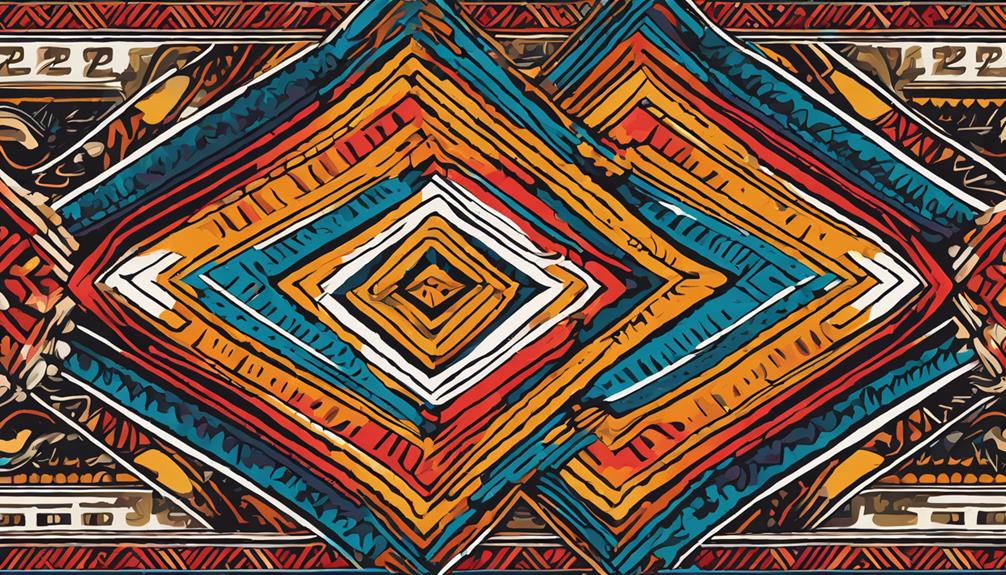
Indigenous Peruvian textile art forms showcase weaving techniques that have roots dating back to pre-Inca times. These indigenous textile art forms encompass a rich tradition of craftsmanship passed down through generations.
Quechua weavers, for instance, use backstrap looms crafted from wood and bone to create intricate textiles. Natural dyes sourced from plants like cochineal and indigo are employed to color fibers, adding vibrant hues to the traditional textiles.
The patterns found in Peruvian textiles often reflect the geography and history of the region, telling stories through thread and design. Alpaca wool, known for its durability and thermal qualities, is a primary material in crafting these indigenous textile art forms.
The combination of ancient techniques, natural materials, and cultural significance results in unique and visually enchanting textiles that are a tribute to Peru's rich textile heritage.
Historical Peruvian Weaving Styles
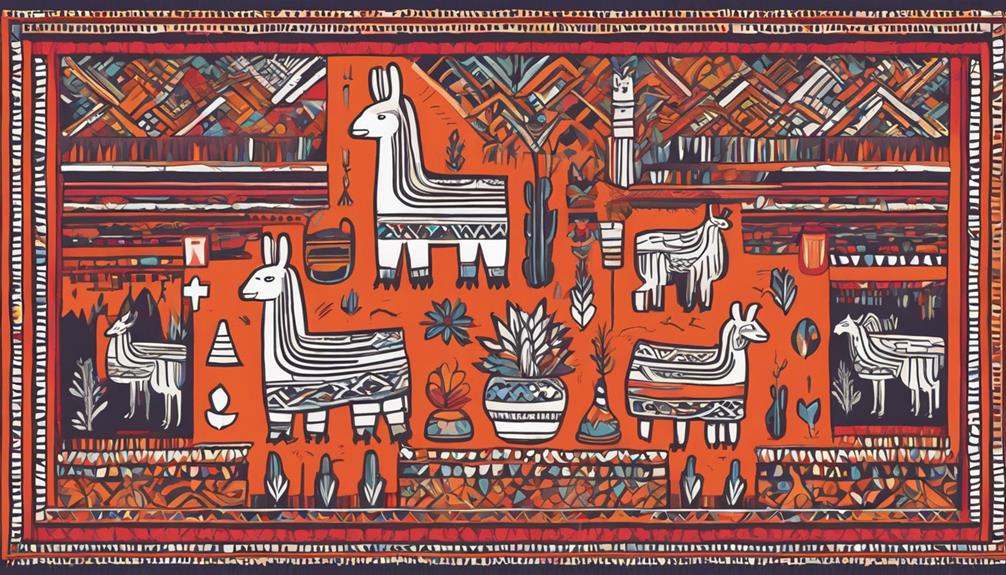
Over 4,000 years of history have woven intricate designs and patterns into the fabric of Peruvian textile traditions. Regions like Cusco, Chinchero, and Huancayo are renowned for their exceptional weaving cultures in Peru. Peruvian textiles are crafted from llama, alpaca, and vicuna wool, emphasizing the use of natural fibers.
Weaving techniques in Peru involve dyeing yarn with flowers, roots, and leaves to create vibrant colors that are characteristic of Peruvian textiles.
Museums in Peru proudly display ancient textiles from cultures like Nazca and Paracas, underscoring the historical significance of Peruvian weaving styles. These artifacts showcase the evolution and mastery of weaving techniques over millennia, reflecting the rich cultural heritage embedded in Peruvian textiles.
The intricate patterns and designs found in traditional Peruvian textiles serve as a tribute to the skill and creativity of generations of weavers who've contributed to the country's textile artistry.
Cultural Significance of Peruvian Textiles

Peruvian textiles carry cultural symbolism that intertwines historical weaving techniques with indigenous artistic expressions. Understanding the significance behind these intricate designs illuminates the stories and traditions passed down through generations.
Embracing Peruvian textiles allows you to appreciate the rich heritage and craftsmanship woven into each unique piece.
Cultural Symbolism in Textiles
Within Peruvian textile art, cultural symbolism intricately weaves stories of heritage and tradition.
- 1. Pachamama Representation: Peruvian textiles often feature motifs representing Pachamama, the Inca goddess of the Earth, symbolizing fertility, nature, and life. This connection to the land highlights the deep respect indigenous communities hold for their environment.
- 2. Animal Symbolism: Llamas, alpacas, and vicuñas are commonly depicted in Peruvian textiles, each carrying specific meanings such as prosperity, wisdom, and spiritual connection. These animals not only serve as practical sources of wool but also hold cultural significance.
- 3. Color Symbolism: Vibrant hues like red, yellow, and blue are prevalent in Peruvian textiles, with each color carrying symbolic meanings. Red may symbolize energy and essentiality, yellow could represent the sun and wealth, while blue might evoke the sky and ocean, reflecting the interconnectedness of culture and nature.
Historical Weaving Techniques
Ancient weaving techniques in Peru showcase the profound cultural significance embedded within traditional textile art forms. These historical weaving methods, dating back over 4,000 years, demonstrate the deep-rooted connection between Peruvian textiles and cultural heritage. Peruvian textiles serve as a means of storytelling, reflecting the traditions and history of the region. Weaving holds a pivotal role in various ceremonies and celebrations, underscoring the importance of textiles in Peruvian culture.
For those interested in exploring the historical weaving techniques of Peru, engaging in textile tours can provide valuable insights. These tours offer the opportunity to witness firsthand the intricate processes involved in traditional Peruvian weaving. Visitors can observe how indigenous communities sustain ancient methods using backstrap looms, preserving unique designs that have been passed down through generations.
Indigenous Artistic Expressions
Explore the lively tapestry of indigenous artistic expressions woven into the rich fabric of Peruvian textile traditions. Peruvian textiles stand as a tribute to a weaving tradition that spans over 4,000 years, intertwining cultural heritage with intricate storytelling.
Here are some key aspects that highlight the cultural significance of Peruvian textiles:
- Preservation of Ancestral Designs: Indigenous communities in Cusco, Chinchero, and Huancayo meticulously preserve traditional weaving techniques, ensuring that ancient designs are passed down through generations.
- Utilization of Natural Fibers: Peruvian textiles mainly feature natural fibers such as llama, alpaca, and vicuña wool, blending historical craftsmanship with modern design sensibilities.
- Vibrant Colors from Natural Dyes: Textiles are dyed using flowers, roots, and leaves, mirroring the vivid hues and intricate patterns inspired by Andean aesthetics. This process reflects a deep connection to the land and its resources in the creation of these exquisite pieces of art.
Impact of Peruvian Textile Art
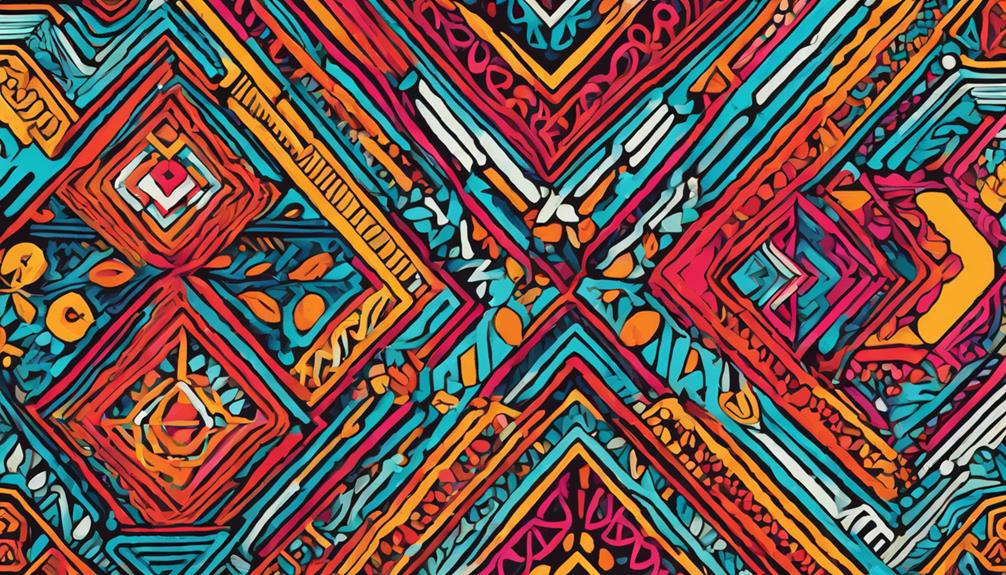
The intricate beauty and cultural significance of Peruvian textile art continues to captivate admirers worldwide. Peruvian textiles, crafted from llama, alpaca, and vicuña wool, are renowned for their exquisite weaving techniques that have been passed down through generations for over 4,000 years.
Museums in Peru proudly display textiles from ancient civilizations like Nazca and Paracas, underscoring the historical importance of these art forms.
Local workshops often host weaving demonstrations to showcase the exceptional skill and artistry of Peruvian textile traditions, providing a firsthand look at the intricate process involved in creating these masterpieces.
Textile tours further immerse visitors in the rich heritage of weaving in Peru, offering a unique opportunity to explore and appreciate the cultural legacy preserved in each thread.
Through these initiatives, the impact of Peruvian textile art extends far beyond the borders of Peru, fostering a deep appreciation for the artistry and craftsmanship inherent in each woven masterpiece.
Evolution of Peruvian Textile Designs
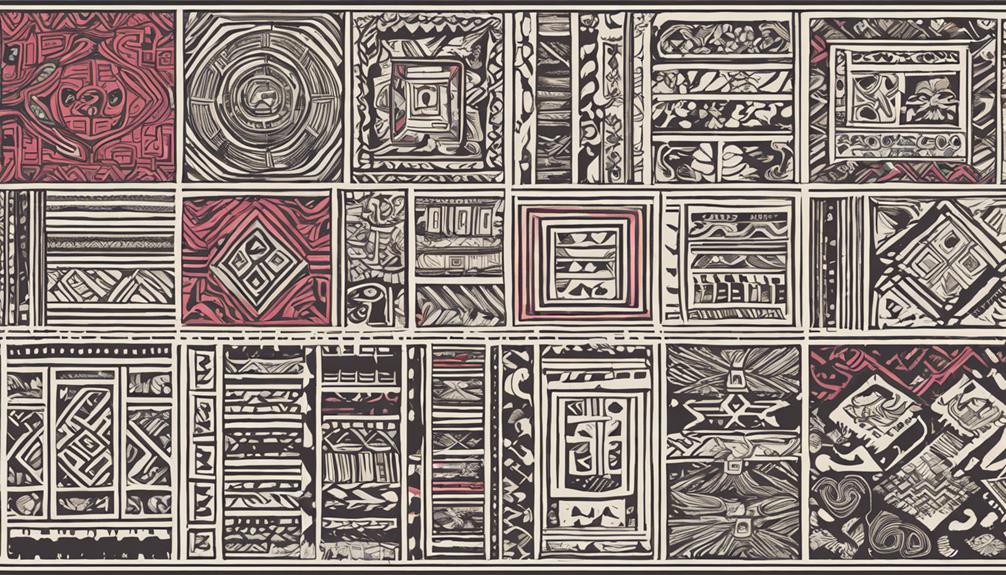
You'll explore how ancient weaving techniques have influenced the evolution of Peruvian textile designs.
Showcasing the cultural significance of these creations in modern fashion.
Ancient Weaving Techniques
Throughout the evolution of Peruvian textile designs, ancient weaving techniques have played a fundamental role in shaping the intricate patterns and cultural significance of traditional Peruvian textiles. The rich history of weaving in Peru dates back over 4,000 years, with each thread telling a story of the region's past.
Here are three key aspects of ancient Peruvian weaving techniques:
- Materials: Traditional Peruvian textiles are crafted from llama, alpaca, and vicuña wool, reflecting the connection between the weavers and the Andean landscape. These natural fibers are skillfully transformed into vibrant fabrics that capture the essence of Peruvian culture.
- Tools: Quechua weavers continue to use backstrap looms constructed from wood and bone, preserving a centuries-old tradition. These simple yet effective tools allow artisans to create intricate designs that showcase their expertise and dedication to the craft.
- Symbolism: Patterns in Peruvian textiles often depict elements of geography and history, serving as a visual language that communicates the stories and beliefs of indigenous communities. Each motif woven into the fabric carries a deeper meaning, contributing to the cultural significance of these remarkable textiles.
Cultural Significance in Fashion
Peruvian textile designs have evolved over millennia, intertwining cultural significance with fashion trends to create a vibrant and timeless art form. Natural dyeing techniques have been a cornerstone of this evolution, as artisans draw inspiration from the rich hues found in Peru's diverse landscapes.
Traditional Peruvian textiles not only showcase the mastery of weaving techniques but also serve as a canvas for storytelling, reflecting the heritage and beliefs of indigenous communities. Bright colors, intricate designs, and ancestral motifs are meticulously incorporated into each textile, highlighting the craftsmanship and attention to detail that define Peruvian textiles.
The cultural significance of Peruvian textile designs extends beyond aesthetics, deep into the social fabric of the country. Indigenous shepherds and breeders play a crucial role in the textile industry, preserving ancient techniques and contributing to the authenticity and sustainability of the craft.
As the industry continues to thrive, modern design elements are seamlessly integrated, ensuring that Peruvian textiles remain expressive and unique, bridging the gap between tradition and innovation.
Contemporary Peruvian Weaving Methods
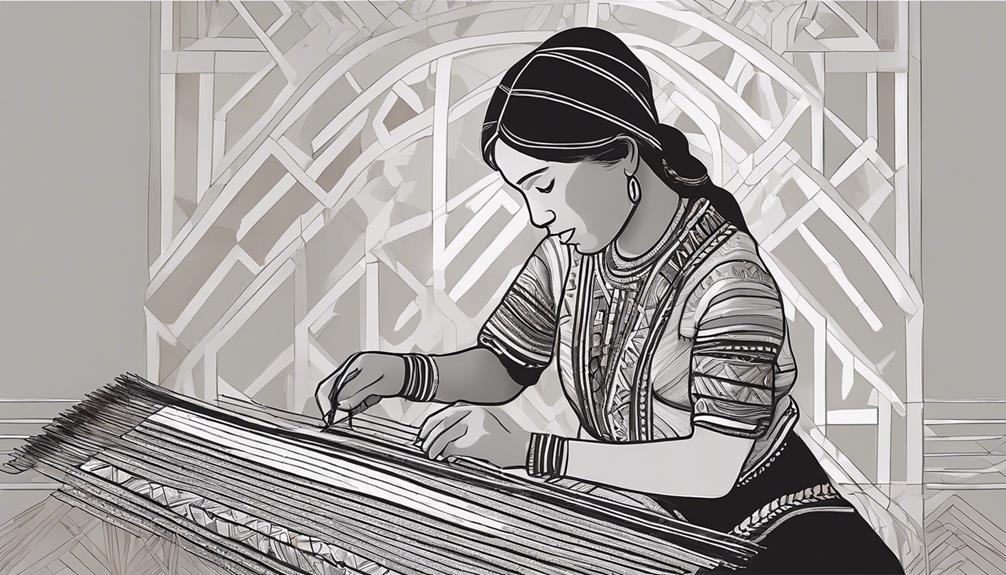
Modern Peruvian weavers often employ backstrap looms made of wood and bone in their weaving techniques. These methods combine traditional practices with contemporary designs, showcasing the intricate artistry of Peruvian textiles.
Here are some key points to understand about contemporary Peruvian weaving methods:
- Preservation of Ancestral Designs: Weavers in Peru continue to honor their heritage by recreating ancestral designs using techniques passed down through generations. This commitment to preserving cultural motifs ensures the rich history of Peruvian textiles endures.
- Elaborate Patterns: Meticulously woven into textiles, elaborate patterns serve as a tribute to the skilled craftsmanship of Peruvian weavers. These designs often depict stories from the past and reflect the cultural significance of the Peruvian highlands.
- Material Choice: While natural fibers like alpaca wool are favored for their durability and thermal qualities in traditional Peruvian weaving, some weavers incorporate synthetic blends for cost-effectiveness. However, pure baby alpaca remains highly prized for its superior quality and luxurious feel.
Preservation Efforts for Peruvian Textiles
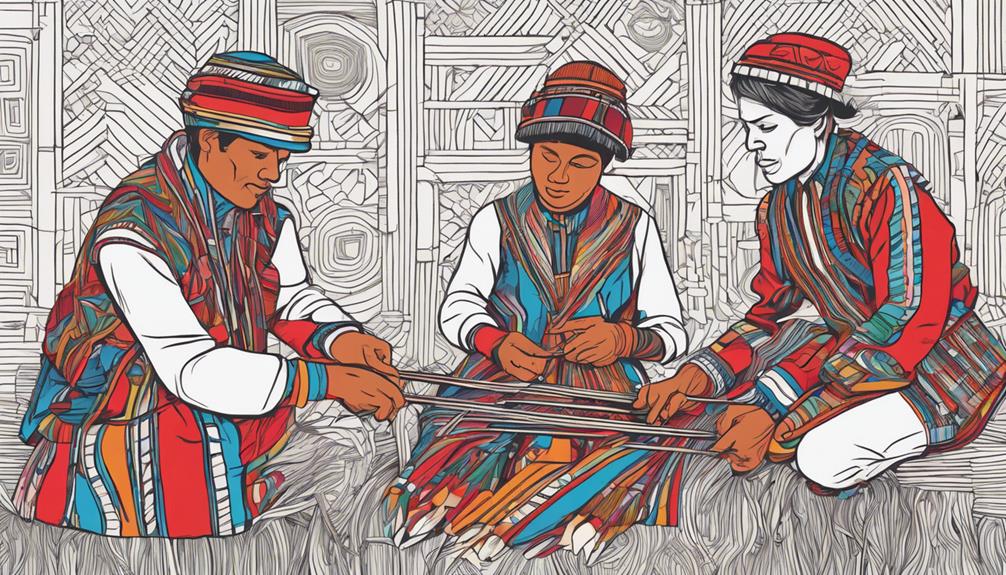
Efforts to uphold traditional Peruvian textiles are crucial for safeguarding the cultural heritage and artisanal skills of local weaving communities. Organizations such as The Center for Traditional Textiles of Cusco and Apus Peru play a significant role in these preservation endeavors by supporting and promoting traditional weaving practices in Peru. However, challenges like low wages and the commercialization of traditional textiles for tourism purposes can jeopardize the authenticity and quality of these art forms.
To highlight the significance of preservation endeavors, consider the following table:
| Preservation Measures | Impact |
|---|---|
| Support from organizations like The Center for Traditional Textiles of Cusco | Maintains continuity of traditional weaving practices |
| Cultural tours by companies like Apus Peru | Educates and raises awareness about Peruvian textile heritage |
| Challenges faced by weavers | Endanger the sustainability of traditional weaving skills |
| Commercialization of traditional textiles | May result in compromises in quality and authenticity |
Frequently Asked Questions
What Is the Name of Peruvian Textile?
The name of the traditional Peruvian textile art form is backstrap weaving. It involves using your body to tension the loom, allowing for intricate designs and patterns in textiles.
This technique has been passed down through generations and showcases the rich cultural heritage of Peru. Backstrap weaving is a tribute to the craftsmanship and artistry of the region, creating beautiful and meaningful pieces that reflect the traditions of the Peruvian people.
What Types of Fabrics Are Popular in Peru?
Fabrics popular in Peru encompass llama, alpaca, and vicuña wool. These textiles often feature vibrant colors achieved through dyeing with flowers, roots, and leaves.
Museums exhibit ancient textiles from Nazca and Paracas, showcasing the diverse fabric types. Weaving communities in Cusco, Chinchero, and Huancayo have played a significant role in the promotion of traditional Peruvian fabrics.
Camelid wool and plant fibers are renowned for their rich hues derived from natural dyes.
What Is the Traditional Weaving in Peru?
Traditional weaving in Peru is mainly done using backstrap looms made of wood and bone. Peruvian weavers create intricate patterns in textiles by meticulously weaving threads together.
Natural fibers like alpaca wool are favored for their durability and thermal qualities in traditional weaving. Weaving in Peru reflects the rich history and culture of the Andean highlands.
Patterns in Peruvian textiles often represent the geography and history of the region where they're created.
What Is the Andean Textile Tradition?
The Andean textile tradition is deeply rooted in the history and culture of the Peruvian highlands. Quechua people sustain this tradition using backstrap looms made of wood and bone.
Weaving in this tradition is used to create various items like clothing, rugs, and hunting slings. The patterns in Andean textiles often represent the geography and history of the region.
Traditional natural materials and colors play a significant role in Andean textile art.
Conclusion
So, next time you see a beautiful piece of traditional Peruvian textiles, remember the intricate history and cultural significance woven into every thread.
These textiles aren't just fabric, but a living tapestry of stories and traditions passed down through generations.
Let them wrap you in the warmth of their heritage and the vibrant colors of their culture.
Embrace the threads of history that connect us all in this rich and diverse world.

